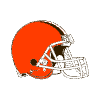2021 NFL free agency: Three good analytic fits and three head-scratchers
The start of the new league year — especially this year, with its lowered salary cap — has brought a flurry of activity, with free agency and trades significantly altering rosters across the NFL.
On Wednesday night, I took a look at all of the developments (so far) through the lens of contextual production data and forward-looking projections, along with reported contract values. In order to rate each move, I considered the involved player’s past on-field resume and his new team’s current roster and coaching philosophy, then compared these parameters and contract values to other players at the same position.
Taking all of that into account, here are three deals with the highest potential return on investment — and three that appear quite suspect.
NOTE: Positional contract rankings below are pulled from Over The Cap.
Good fits
Contract details: One year, $10 million.
Next Gen Stats shows that, on pass attempts of 10 air yards or less with the Dolphins last season, Fitzpatrick had a 78.6 percent completion rate, nine touchdowns and no interceptions, with a passer rating of 110.1, third-best in the NFL. Washington, meanwhile, averaged the fewest air yards per attempt in 2020 (6.2). On deep throws (those of 20-plus air yards), Fitzpatrick’s per-attempt mark of 20.8 yards topped all QBs last season (among those who attempted at least 100 passes). With the addition of the versatile Curtis Samuel to a pass-catching corps that already featured the ultra-productive Terry McLaurin, Fitzpatrick’s in good shape to outperform his salary or possibly provide a critical bridge for a young QB — or both.
Contract details: Three years, $22 million.
With Zeitler helping to block for them over the past two seasons, Giants ball carriers recorded 48 rushes of 10-plus yards inside the tackles, good for second-most in the NFL in that span (per NGS). I point out the run game here because of the importance to the Ravens’ scheme. In pass protection, Zeitler has ranked in the top 10 percent of guards at preventing pressures, per my computer vision, over the past three seasons. One interesting note is that last season, Zeitler’s response time — meaning, the time from snap to holding his stance against a defender — increased by about 0.4 seconds from his seasons prior. That is the wrong direction, as it can mean Zeitler has less favorable leverage. The good news here, though, is that the Ravens’ scheme and play-calling minimizes the impact of this trend and will likely allow Zeitler to be extremely efficient. This deal — which ranks 16th among guards on a per-year basis, according to Over The Cap — represents a favorable cost to the Ravens, one that is well below his production projection in this scheme.
Contract details: Three years, $33.75 million.
The Browns are pretty quietly having an excellent free agency period, and the anchor of their moves thus far, per my math, is Johnson. Last season, the Rams as a team allowed four touchdowns and a passer rating of 60.5, while logging nine interceptions, on passes of 10-plus air yards, the fewest TDs and lowest passer rating allowed on such passes in the NFL (per NGS). The Browns, by contrast, allowed 25 touchdowns (most in the NFL) and a passer rating of 115.0 (fourth-worst) on such passes. On an individual level, Johnson allowed a passer rating of 53.4 (eighth-lowest among safeties with 10-plus targets, per NGS) and zero touchdowns with one pick on passes of 10-plus air yards last season. Johnson’s projected fit with safety Grant Delpit, Cleveland’s second-round pick from 2020 who missed his rookie season due to injury, marks a fast and efficient change in the Browns’ secondary from last season.
Head-scratchers
Contract details: One year, $10 million.
I see merit in the strategy reflected by this deal. Without being able to swing a swap for a premium talent like Russell Wilson or Deshaun Watson, and knowing it’ll likely be too costly to trade up from No. 20 overall to draft a quarterback, the Bears secured a veteran placeholder with a seemingly stable floor. However, Dalton’s projected production is more limited — and he carries more potential downside — than you might think, with his resume and playing style exacerbated by questions along Chicago’s offensive line and among the pass-catching options.
Last season, Dalton had a completion rate when not under pressure of just 66.2 percent, 32nd in the NFL, per NGS (among those with a minimum of 200 attempts). Dalton’s passer rating when not under pressure was just 87.7, which ranked 30th; fellow Bears QB Nick Foles was one of just six quarterbacks to post a lower passer rating (83.7) in such situations. These figures are troubling because they represent what Dalton can do in the “best-case scenario,” when the impact of external factors is limited, a condition Dalton isn’t likely to see much of with the Bears. Dalton’s 63.6 completion percentage when his receivers had less than 3 yards of separation ranked 17th in the league. In other words, the team around him needed to play well to help him out, and when they didn’t, the results reflected that.
Contract details: Four years, $60 million.
Hendrickson’s placement here is about cost and substitutes. Hendrickson’s deal averages $15 million per year, which is the same as what the player Hendrickson is replacing in Cincinnati, Carl Lawson, is getting from the Jets — but Hendrickson is costing the Bengals one year more than Lawson is costing New York. Lawson was already producing at the 13th-highest pressure rate last season (12.7%, per NGS), and if the Bengals had retained Lawson, he would have been able to keep rolling in their defense without having to adapt to a learning curve, like Hendrickson will presumably have to. While Hendrickson’s pressure rate last season (16.3%) was tied for second-highest in the NFL (among those with 200-plus pass-rush snaps), it was also somewhat anomalous, given that it was the highest pressure rate of his four-season career thus far (he’d carried a career pressure rate of 10 percent coming into 2020). Hendrickson is a nasty defender, that’s for sure — but at $15 million per year, and without the promise that he’ll enjoy the symbiotic services of another serious pass rusher, like he did with Cam Jordan in New Orleans, Hendrickson seems like a candidate to count as an overpaid or underperforming player come next season.
Contract details: Three years, $63 million.
Williams’ presence here is about contract cost. His average annual value ($21 million) is tied for second-most among interior defensive linemen, with only Rams star Aaron Donald ($22.5 million) netting more. Last season, Williams had a pressure rate when aligned inside of 8.8 percent, while his overall pressure rate of 9.2 percent counted as a career high (per NGS). Williams has been a better run stopper than pressure generator, boasting the fifth-best run-stopping rate among interior defenders over the past two seasons, per my computer-vision tracking, but even so, it’s hard not to see this as an overpay. The Giants traded third- and fifth-round picks to acquire Williams from the Jets in 2019, so it’s possible that their belief about the market at the position — and Williams’ place in that market — was seen through a biased lens.
Follow Cynthia Frelund on Twitter.
Source: Read Full Article












